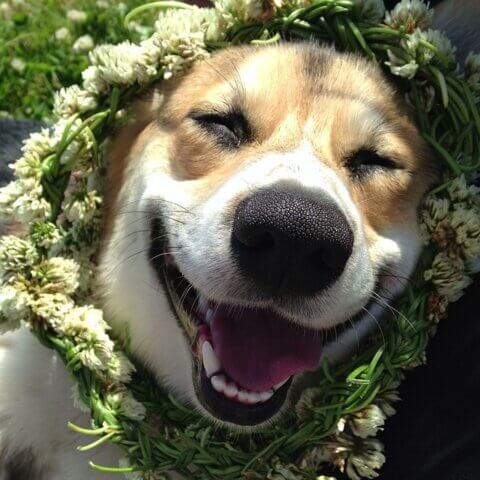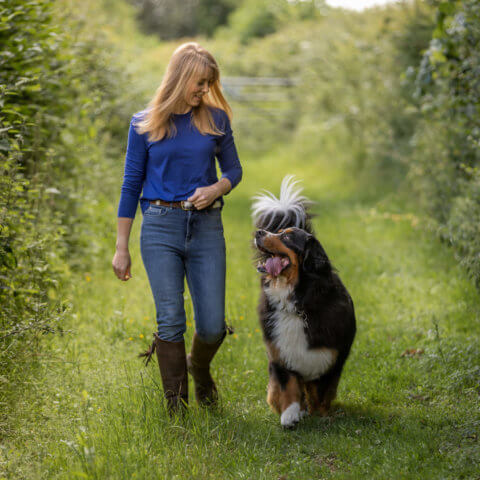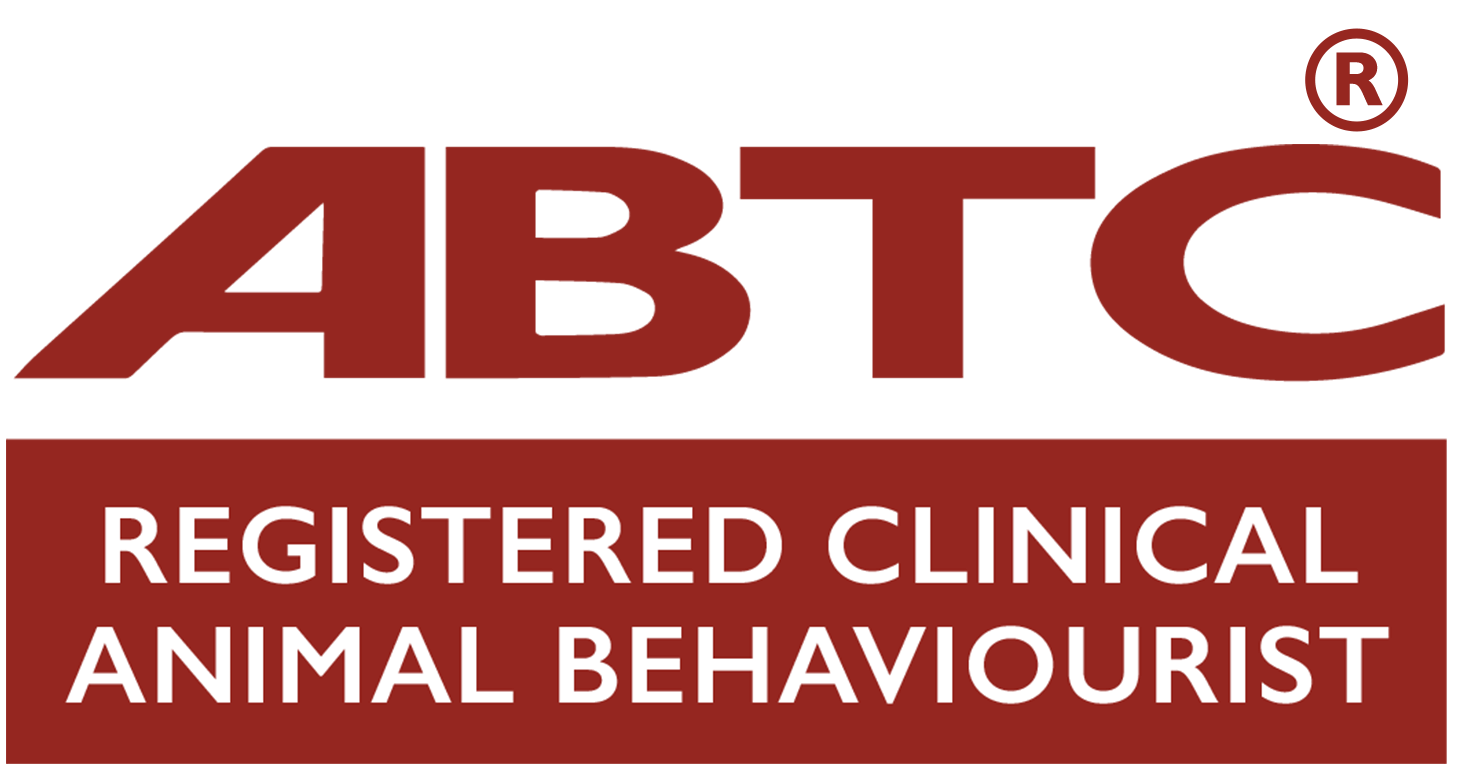Dogs engage in what can appear to us humans as curious behaviours, and one of them is rolling in animal faeces. This behaviour can be a frustrating for dog owners, however it is very common and a dog ‘normal’ behaviour. But why do dogs do it?
Possible reasons for rolling in poop
Communication
Several theories have been proposed to explain why dogs engage in this behaviour. One possibility is that dogs are trying to mask their scent. By covering yourself in scents that already exist in the environment, the dog can camouflage themselves more effectively. In the wild, predators use their sense of smell to track prey, so by rolling in faeces, dogs might be attempting to disguise their own scent to avoid being detected – lending itself to the idea that this is a hard-wired, innate dog behaviour.

Another possibility is that the dog is scent marking that dirt to communicate to others that ‘Fido was here,’ similar to how a graffiti artist may tag a wall with their mark to alert others that they visited that area.
Whilst others suggest that by rolling in faeces, dogs may be picking up the scent of other animals and carrying it with them to share with other dogs. This would allow dogs to exchange important information about their environment and other animals – similar to how a newsreader broadcasts the local news so we can stay abreast with all the latest goings on.
Stress reliever
Rolling in poop might also be way for dogs relieve stress or anxiety. Similar to how humans might engage in behaviours like nail-biting or hair twirling when stressed, it is possible that dogs roll in faeces as a coping mechanism.
Education and enrichment
Personally, I think that some dogs may roll in other animals’ poop because it is just great fun! Research highlights how dog share many similarities to humans and this includes engaging in playful behaviour. It is possible that just as young children love to play in the mud and get their hands mucky, which also teaches them about their environment, learning about the texture and feel of that mud, its temperature, smell, and more – dogs may find squishing about in poo as equally enriching and serves as a source of education.
How to reduce rolling in poop and other considerations
While rolling in faeces may be a natural behaviour for dogs, it can be unpleasant and unhygienic for their owners. Here are 10 Tips for reducing this behaviour and other considerations:
- Keep your dog on a lead: Managing the dog by having them on a lead can instantly stop the likelihood of rolling in poop. Using a long training line can enable your dog to wander about and track smells but also enables you to walk down that line should recall or a ‘leave it’ behaviour breakdown if they are starting to show an interest in something. I like to use as a long line the BioThane lead. For advice on how to use a long training line, check out the video from Battersea Dogs & Cats home.
- Choose your walking environment wisely: When walking your dog, consider where you are walking them. For example, whilst walking in the farmer’s field may be idyllic, the chances are that there will be a fair amount of faeces on the ground from livestock plus wildlife, especially if those fields are occupied or have recently held sheep, cows, horses and more. If you are wanting to walk through such locations, then dogs must be kept on their leads for the safety of all (see the Countryside Code) which also helps reduce poop-rolling, and stick to the public footpaths. These paths are less likely to have animal dirt on or immediately around them where livestock may tend to avoid being up close and personal to high footfall areas due to their flight distance as prey animals.
- Consider the time of day: Prey animals, such as rabbits, tend to remain in their borrows during the day, and appear more during early morning hours and twilight. Walking in broad daylight not only helps owners to better spot potential poop hazards along the way, but also reduces the likelihood of seeing such small animals darting about which may prompt high arousal in the dog. Such arousal can increase the likelihood of behaviours such as recall, breaking down. Instead, we want to maximise the chances for the dog to be able to listen and focus onto their owner by choosing appropiate places to walk, and at times of day where it’s least distracting, so we can then work on training behaviours such as ‘leave it’, recall and more. How good the dog is at being able to disengage from distractions such as little animals, piles of poo and other things of interest, will depend on numerous factors such as their level of formal training, distance to the other animal, number of distractions in the environment, their previous learning experiences in similar contexts, what rewards we’re attempting to use (or not) to motivate the dog, and so on.
- Review your dog’s level of mental and physical exercise and enrichment: Engaging your dog in activities that provide an appropiate level of mental and physical stimulation that meets their needs can help produce ‘happy hormones’ and burn off excess energy, reducing the risk of them seeking out rewarding opportunities that may lead to them getting into trouble. Do take into account your dog’s size, breed, age, health status and so on, in order to meet their needs appropriately. Reviewing the dog’s daily hedonic budget (how they get their highs and where the lows come in) can enable owners to address any deficits of positive experiences, and reduce negative ones. In turn this helps reduce stress and anxiety which may help to decrease the likelihood of rolling in faeces.
- Keep your property and surrounding area clean: Regularly clean up around your property, garden, front area/pavement, and check flower beds for any animal poop. Dispose of any faeces to minimize the chance of your dog rolling in it. Often neighbouring cats or foxes may pay a visit to gardens or areas out the front of the property in search of food and water, and may defecate along the way. Regularly checking the immediate area your dog frequents reduces the practice of sniffing out poop and rolling in it!
- Patch up any areas wildlife may be getting onto your property: If you find wildlife are visiting your property and leaving little deposits behind, then review your boundaries to check what can be done to reduce your visitors’ access. You can buy easy to install deer fencing to raise boundaries, and use chicken wire across the bottom of fences and along the ground (install in an L-shape) and weigh down the base area with rocks, shingle, wooden batons, to reduce burrowing animals’ access.
- Keep your dog’s health checks and treatments up to date: Rolling in poop can transfer parasites and bacteria to the dog. It is important to keep up worming and flea treatments up to date, and regularly groom the dog so we can check for any nasties lurking amongst their fur.
- Seek professional support: If your dog’s rolling behaviour is particularly persistent, then engage the services of a certified dog trainer or behaviourist that uses humane handling methods, to help address the issue. Practitioners can help owners learn how to hone their dog’s recall and other impulse control behaviours such as ‘leave it’, ‘drop’, ‘wait’, and teach these in a systematic way that sets owners and their dogs up for success. For example, you wouldn’t expect your dog to immediately move away from a steaming pile of fresh fox poop on their first few lessons! Instead, you would need to teach the behaviour first, work on that behaviour away from distractions, then slowly build in different items/objects/triggers to your practice sessions. Then you would practice the behaviour in other locations with least distractions, and then slowly build distractions in at a distance, and so on. Think of this process much like school – you would need to graduate from Nursery before moving onto Reception Year, then onto Year 1 and so on. Leaving a pile of poop would be, for some dogs, like having an MSc degree level of skill – which they may not have yet! So be patient when working on new behaviours or refining current ones. Check out the Register of practitioners listed on the Animal Behaviour and Training Council’s website and read more about generalising behaviours here which explains more about building reliable behaviours.
- Smelling sweet: If your dog has rolled in faeces, avoid getting cross. Instead distract them away from the poop as best you can, and get them home as soon as possible so they can be cleaned thoroughly. There are various products available that can help to effectively remove stubborn wildlife poo and other foul odours from your dog’s coat. These include but are not limited to Groom Professional Baby Fresh dog shampoo and Animology’s Fox Poo.
- Familiarisation visits with the groomer and regular handling: To reduce stress, it is always a good idea for dogs to be trained to be handled/touched, and learn to be comfortable with such handling and grooming with yourself, as well as with others. This can be done gently, and using food reward to make the short training sessions, positive ones. Click here to see my tips on grooming/handling to reduce touch sensitivity. Additionally, locate a professional groomer near you that uses low stress-handling methods, and get your dog used to going there. By doing so, should they accidentally find and then roll in any animal faeces, the dog is already familiar with that groomer, the grooming environment, and being handled in that situation by someone other than yourself. This helps to reduce unnecessary stress.

While there are several theories about why dogs roll in faeces, to date, there is no one universally agreed reason for why dogs love to smother themselves in the stinky stuff! However, rolling in faeces can be a dangerous past time, as dog can pick up parasites or bacteria that can lead to illness or infection.
So, it’s important to discourage this behaviour by rewarding alternative desirable behaviours such as recall and ‘leave it’, and practicing these behaviours regularly so the dog is well-versed in performing these across various situations. And, by exercising great management via a long training line, considering where you walk, the time of day, reviewing their hedonic budget, and seeking professional support where needed, you’ll have a happier and sweeter smelling walk.
References:
- Bradshaw, J. W. (2011). Dog Sense: How the New Science of Dog Behavior Can Make You A Better Friend to Your Pet. Basic Books.
- Horowitz, A. (2010). Inside of a Dog: What Dogs See, Smell, and Know. Simon and Schuster.
- Overall, K. L. (2013). Manual of Clinical Behavioral Medicine for Dogs and Cats. Elsevier Health Sciences.
Learn more about our classes

Get Hanne's Book
Playing With Your Dog will help any dog owner work out the games that are best suited for their pet to play throughout his life, from puppyhood to old age. The book also shares some tricks for all ages, group activities, and recommended toys that dogs will enjoy.

























